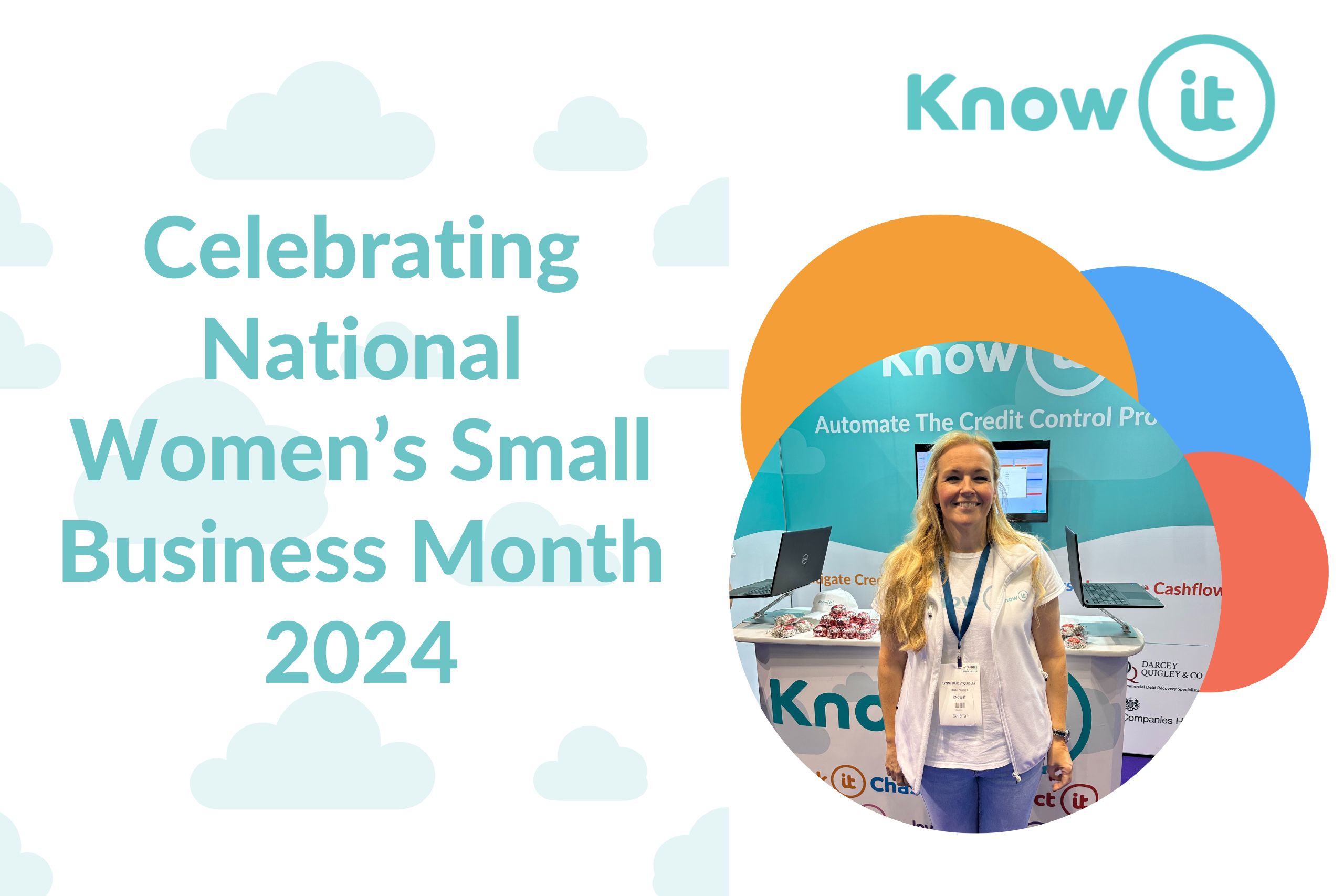Everything You’ll Ever Need For Better Credit Control
Without a watertight credit control process your business is leaving itself wide open to the risk of late payment, a problem crippling UK businesses.
With soaring costs and higher interest rates it has never been so important to eliminate any blockages to our business cashflow and make our processes more efficient.
We see businesses everyday owed substantial amounts of money from overdue invoices, and many times these cashflow issues could have been easily avoided had they followed a tighter credit control process.
This is why we’ve put together this guide on everything you’ll ever need for better credit control. Hopefully you take some actionable tips away and implement them into your own credit control process and give your cashflow a nice boost.
Run thorough business credit checks and monitor changes
The very first step in any credit control process worth its salt is checking the creditworthiness of a customer before accepting their order. A business credit check should help you answer a few questions:
- Can the full amount of the order be paid within your specified timeframe?
- Is there a high chance that your customer could run into financial difficulties in the near future?
- Are there any notices related to your customer that could point towards them having problems paying you?
- Do they have a track record of late or non-payment?
- What would be a suitable amount of credit to offer your customer, given their credit rating?
- How much of a credit risk do they pose on your business?
- Do they have outstanding Country Court Judgements (CCJs)?
Once you have the answers to the questions above you should have the information you need to make a sound judgement as to whether to accept an order.
Check-it provides you with all of the information above, but also goes a step further and gives you even deeper insight, such as providing data on Unsecured Creditor Claims.
Unsecured Creditor Claims allows you to identify losses suffered by a business as a result of their customers going into liquidation or administration. This crucial piece of data isn’t provided in standard credit reports and provides an extra layer of intelligence to your credit reporting. For example, you could run a credit report on a company and you see they have a perfect credit score and you accept a substantial order. Now, would you accept this order if you knew your customer just lost out on a fix figure sum due to their own customer going into administration?
When you run a credit report using Check-it any changes to the report will be automatically monitored so there’s no need to pull different credit reports for the same customer, giving you piece of mind and saving you money!
The information on a Check-it credit report comes from our partnerships with Creditsafe, Companies House and The Gazette helping you see a clearer picture of your customer’s credit and company information.
Deciding on credit terms for better credit control
Once you’ve run your business credit check through Check-it you’ll have all the intelligence you need to decide on how much credit to offer your customer and repayment terms.
Some businesses decide to only offer credit on minimum order sizes, this is one may of minimising the amount of credit risk they’re exposed to, but not essential.
One thing that you must do, however, is set a credit limit. This is the maximum amount of credit you’ll make available to a specific customer and their credit report will let you know much this will be given their circumstances. A company that poses less of a credit risk to your company will typically see a higher credit whereas more risky companies should receive a lower credit limit, mitigating some credit risk.
There are some key things to consider when deciding on the amount of credit you can offer to help mitigate credit risk:
- What is the value of the credit your customer is requesting?
- How risky are they deemed to be according to their business credit score or rating?
- Do they have any outstanding County Court Judgements (CCJs)?
- Have any Notices been flagged that indicate your customer could experience problems with their finances in the near future, impacting their ability to pay you on time?
- If your customer was to default on payment, how much could you realistically afford to lose?
Repayment terms
Your repayment terms should favour you as it’s critical you shield yourself from the risk of late payment or default.
Once you agree on repayment terms you must get your customer to agree in writing, usually in the form of a contract.
If you’ve never written a contract before there are some key things you must include:
- How long your customer has to pay the total balance (usually 30, 60 or 90 days depending on the size of the order).
- If you customer is paying in instalments how much is each instalment will be and the dates each instalment is due.
- Late Payment Interest (LPI) you will be entitled to claim in the event of late payment.
What is Late Payment Interest?
The Late Payment of Commercial Debts Act gives you a statutory right to charge late payment interest if another business pay your invoice late, so it’s definitely worth including in your repayment terms!
You can legally charge 8% plus the Bank of England base interest rate, which currently sits at 5%, so the total interest would be 13% of your invoice value.
When it comes to chasing late payment using this can give you some leverage and ensure your invoices are paid quicker!
Credit control techniques to shield yourself from risk
A solid credit control process will mitigate credit risk by increasing your chances of being paid on time.
As we’ve mentioned monitoring your existing customers will reveal insights that you’d have otherwise missed and left yourself open to credit risk. Make a note of any unusual activity such as if your customer suddenly stops placing regular orders. This could be a sign that they’re experiencing cashflow problems which will bite you if they still owe you for outstanding invoices.
When you take on new business it’s always worth setting slightly lower credit limit to gauge whether your customer will pay you on time. Over time as your customer proves that they’re a good prompt payer you can increase their credit limit and accept larger orders.
Credit insurance is another tool you can use to mitigate credit risk, giving you a nice safety net if your customers don’t pay their invoices on time so your cashflow isn’t affected. Definitely a solution worth checking out!
There may be occasions where a customer requires more than their credit limit actually allows. A way to get around this without opening yourself to more risk whilst fulfilling your customer’s order is to ask for cash up front.
If you have a customer that has outstanding invoices and are placing more orders, you should always ask them to clear their existing balance before offering even more credit, particularly when they owe a substantial sum.
Invoicing & credit control
Errors on invoices or poor invoicing processes contribute to invoices being paid late, so do not overlook this simple but very important step!
Make sure your invoice contains:
- Goods or services broken down and itemised with the cost of each individual item.
- The total cost of the goods or services delivered.
- Agreed payment date
- Order number.
- Invoice number.
- Full details and instruction for payment.
- Your business details such as address, phone number, email address and VAT number.
When it comes to sending your invoice make sure you find out who the best person in the business is to send it to. Some of the larger businesses need invoices sent to the correct team in order for them to get processed and paid.
Businesses will also have a cut off point in the month where an invoice needs to be sent before in order for it to be paid that month so it’s always worth double checking when this is.
Last but not least, sending your invoice promptly speeds up the time it takes for you to be paid so generate and send your invoice ASAP!
Being pro-active chasing overdue invoices
When your invoices are coming up to their due date it is critical that you have a plan to chase and take payment as soon as possible to keep a steady stream of cash flowing through your business.
Businesses that have the most success chasing overdue invoices has at least 3 different messages prepared to send to their customers:
1st payment chaser
These chasers are typically sent within one or two days of your invoice due date when payment is yet to be made.
Sometimes mistakes can happen and your invoice may have been missed. If this is a the case, a gentle prompt is all that will be needed to make sure payment is make swiftly.
With this in mind, your 1st payment chaser should be friendly and polite, whilst explaining that payment is now overdue before asking when you can expect the payment to be made.
A quick tip – Always attach the relevant invoice to all of your chasers. Your customer will see at a glance which invoice you’re referring to and can’t make the excuse that they’ve never received an invoice, we’ve heard that one before!
2nd payment chaser
You should keep a 2nd payment chaser up your sleeve in the event your 1st chaser has no effect. We’d recommend sending your 2nd chaser 7 days after your payment date.
As your payment is now 1 week overdue you should acknowledge this, and then take the opportunity to ask if there’s anything in particular causing a delay to payment being made such as a query or issue with the initial invoice. This will give you the perfect opportunity to eliminate any blocks to your payment being made.
If the payment hasn’t been made due to a problem at your customer’s end show empathy where it’s due, but always be sure that you’re not being taken advantage of, getting your invoice paid quickly is a huge priority here.
3rd payment chaser
Hopefully you never need to send this many chasers for late payment but you should have a late payment chaser prepared for if 30 days go by and there’s still no payment.
Here, it’s time to emphasise that payment is needed urgently as this is now a problem. This is where we would mention that late payment interest will be applied if the full balance isn’t paid immediately. This is a great incentive you can use to encourage payment because who ever wants to pay more than they need to?!
Final demand chaser
Businesses who are extremely late paying invoices will need to be sent a final demand. This is where you’re stating that this will be final reminder you send and if payment is still not forthcoming you’ll be left with no other option but to escalate the case to a third-party.
We’d suggest mentioning that if payment is made immediately then the case will be closed and the matter resolved, to give extra incentive to pay quickly.
As you’re threatening to escalate things here this needs to be your last attempt to recover your unpaid invoice, otherwise any further communications from you won’t be taken seriously.
Writing late payment letters and emails are critical to your credit control. Find out more on how to write a strong warning letter for outstanding payments that will help you get paid quicker!
Whilst writing and sending these chasers may sound very time consuming it’s a task that needs to be done. A whopping 62% of businesses aren’t actually chasing late payments so is it any surprise that the average SME is owed over £79,000 from outstanding invoices?
Chase-it automatically sends payment reminders and late payment chaser email, letters and SMS according to your own personalised schedule so you don’t need to worry about writing and sending them yourself!
Escalating matters
If your payment chasers fall on deaf ears it’s time to call in some backup!
You have a few options here, some businesses might choose to use a solicitor. This will certainly intimidate your customer into paying but court fees and paying a solicitor by the hour and for sending individual letters will rack up a hefty bill! Not to mention the huge backlog of cases courts are facing right now – it will take months to recover what you’re owed.
Talking to a commercial debt recovery specialist is your best bet as they’re experts in the field dealing with cases day in day out. Know-it’s commercial debt recovery partner Darcey Quigley & Co have decades of experience in commercial debt recovery collecting hundreds of millions of pounds for clients from all over the world.
They work on a no-win-no-fee basis and always strive to not only recover your outstanding amount but also late payment interest, compensation and your costs for debt recovery from your debtor. It’s a truly risk free approach to recovering overdue invoices and you may not even need to pay the costs yourself!
An all-in-one solution to all your credit control needs
This guide will give you everything you need to implement a more robust credit control process and help minimise late payments.
A watertight credit control process takes time and attention when doing so manually, and the truth is when running a business we’re strapped for time!
But failing to have a sound credit control process could cost you. So what are you options?
Well, we have the perfect solution. Know-it automates the complete credit control process to help you mitigate credit risk, reduce debtor days and boost your cashflow!
Credit check & monitor customers, chase payments and collect unpaid invoices all in one place!
Try Know-it free for 30-days and get a free company credit report! You don’t even need to enter your credit card details. What have you got to lose?
Lynne is the Founder and CEO of Know-it!
She is a passionate, driven and forward-thinking entrepreneur determined to help resolve the late payment crisis gripping SMEs.
Having worked within the credit management industry for over 27 years and ran UK leading commercial debt recovery specialists Darcey Quigley & Co for over 16 years, Know-it was devleoped to make credit control more accessilble for SMEs to help them effectively mitigate credit risk, reduce debtor days and boost cashflow!
Connect with me on LinkedIn!



































